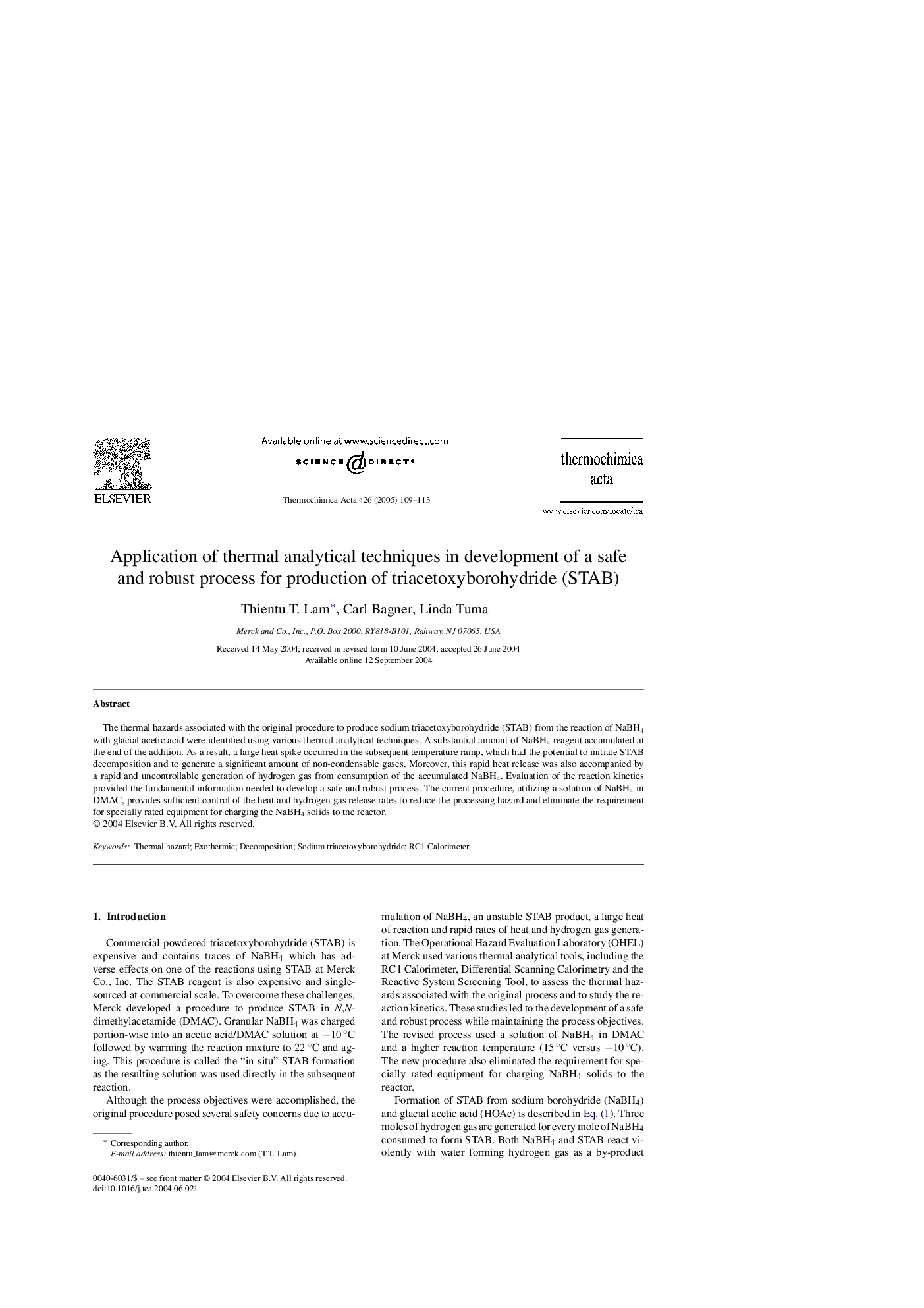| Article ID | Journal | Published Year | Pages | File Type |
|---|---|---|---|---|
| 9694242 | Thermochimica Acta | 2005 | 5 Pages |
Abstract
The thermal hazards associated with the original procedure to produce sodium triacetoxyborohydride (STAB) from the reaction of NaBH4 with glacial acetic acid were identified using various thermal analytical techniques. A substantial amount of NaBH4 reagent accumulated at the end of the addition. As a result, a large heat spike occurred in the subsequent temperature ramp, which had the potential to initiate STAB decomposition and to generate a significant amount of non-condensable gases. Moreover, this rapid heat release was also accompanied by a rapid and uncontrollable generation of hydrogen gas from consumption of the accumulated NaBH4. Evaluation of the reaction kinetics provided the fundamental information needed to develop a safe and robust process. The current procedure, utilizing a solution of NaBH4 in DMAC, provides sufficient control of the heat and hydrogen gas release rates to reduce the processing hazard and eliminate the requirement for specially rated equipment for charging the NaBH4 solids to the reactor.
Related Topics
Physical Sciences and Engineering
Chemical Engineering
Fluid Flow and Transfer Processes
Authors
Thientu T. Lam, Carl Bagner, Linda Tuma,
